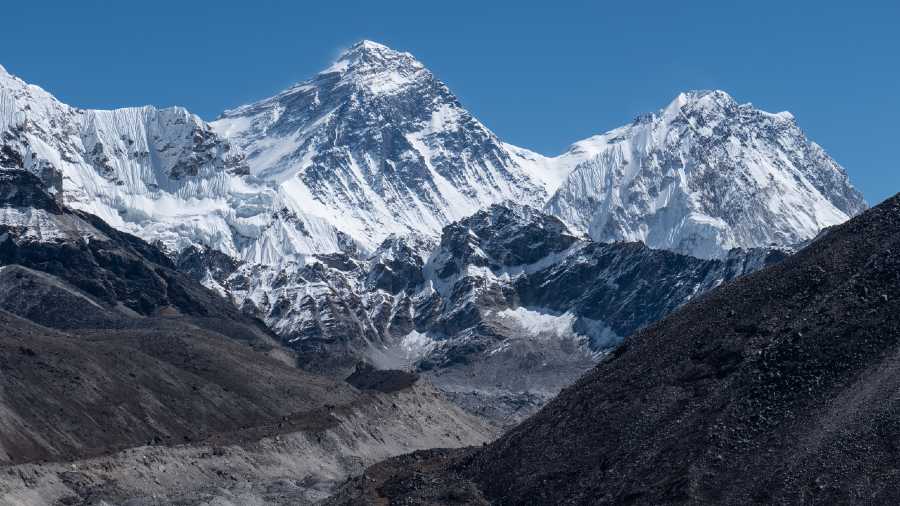Researchers in Nepal on Tuesday warned that the highest glacier on the top of Mount Everest could disappear by the middle of this century as the 2,000-year-old ice cap on the world’s tallest mountain is thinning at an alarming rate.
The International Centre for Integrated Mountain Development (ICIMOD) here said that Everest has been losing ice significantly since the late 1990s, citing a latest research report issued here.
The Everest Expedition, the single most comprehensive Scientific Expedition to Everest, conducted trailblazing research on glaciers and the alpine environment, the ICIMOD said.
A recent article published in the Nature Portfolio journal reported that the ice on Everest has been thinning at an alarming rate. The multidisciplinary team comprised scientists from eight countries, including 17 from Nepal. Three of the co-authors of the study were affiliated with the ICIMOD.
It has been estimated that the ice in the South Cole glacier located at an elevation of 8,020 metres is thinning at a rate of nearly two-metre per year, the report said.
The findings were based on data from a 10-metre-long ice core obtained from South Col Glacier (in the Nepali side of the Everest) at an elevation of 8,020 metres and meteorological observations from the two highest automatic weather stations in the world located on the southern slopes of Everest at 7,945 and 8,430 metres.
The researchers, on the basis of radiocarbon dating, estimated the age of ice in the glacier to be 2,000 years old.










